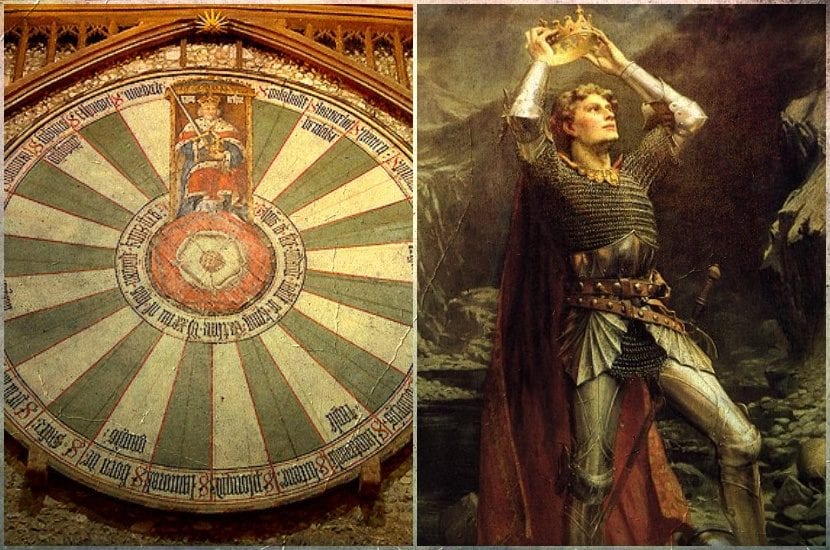
1. Round table in Winchester. It was painted in 1522 by order of Henry VIII. 2. King Arthur, by Charles Ernest Butler.
The legend of King Arthur and the Knights of the Round Table (or Table) is one of the great myths of the Old Continent, which extends to literature. And its story and characters have gone through a lot of changes over time. Now there is one more: the find, in the archives of the Bristol Central Library, of an ancient and unknown XNUMXth century version from a tale about the magician Merlin and King Arthur. Taking advantage of the news, I review four of the infinite versions what about Arturo and his knights.
King Arthur and I
Arturo is not one of my greatest literary heroes, but I have sympathy for him. Perhaps because of the innumerable film versions, from the best known classic The Knights of King Arthur (1953) to the last, King Arthur, the legend of Excalibur (2017). But I admit that it has inspired characters in my stories. And both their iconography and their names (Uther Pendragon, Lancelot, Merlin, Guinevere, Galahad, Morgana, etc.) universally known.
Also, on my first stay in England too I was in the city of Winchester and I saw that famous table exposed in his castle. Also, for obvious reasons of studying English philology, I had to take a look at Thomas Malory's XNUMXth century classic.
New find
The fragments found have been attributed to Jean gerson, a French scholar. In total there are seven scrolls, written in old french, who collect a version with notable differences from the known story. They could be part of a version of the call Estoire by Merlin, from other texts known as Lanzarote-Grail or the cycle of The Vulgate.
In what has now recovered Arthur is already king. He and Merlin have triumphed in battle, one of the previous stages that lead to the history of the quest for the holy grail by Arthur and his knights. The importance of the discovery of these fragments is that they show some changes in details that give a slightly altered version of the narrative of that battle, and longer descriptions of the action are also included.
Four stories
The titles of books and novels dedicated to Arturo are infinite, so I highlight these four:
Thomas Malory - Arthur's death
This work is responsible for the version we have today of the Arthurian myth.
Sir Thomas malory (1408-1471), a gentleman with a hectic life who lived during the War of the Two Roses, wrote this first great epic in English literature. He did it supposedly from jail and from compilation I had of old French and British sources that he was translating while adding own ideas.
It was printed in 1485 in the workshop of William Caxton, the first English printer, who titled it Le Morte D'Arthur. He was the prologue and unified all eight Malory novels into twenty-one books. It is the one that has inspired the most recreations in all artistic fields, from new literary versions to pictorial representations as the Pre-Raphaelites showed.
Jack Whyte - Chronicles of Camelot
Scottish writer residing in Canada, a whyte He is known for his historical novels, especially for this series written in the late 90s dedicated to the Chronicles of Camelot, where he uses the theory of King Arthur's Roman past. There are two titles: The stone and the sword y The roar of steel
Valerio Massimo Manfredi - The Last Legion
Manfredi, another great of the contemporary historical novel, also agrees with Whyte in drawing the Roman origin of Arthur in this recently successful title. It was taken to the cinema in 2007, but it did not match its literary original.
Mark Twain - A Yankee at King Arthur's Court
The famous American writer chose time travel as an excuse to write arhumorous elato and full of social and political satire that characterized it. He caricatured everyone: monarchical, ecclesiastical and chivalric institutions, and also the characters.